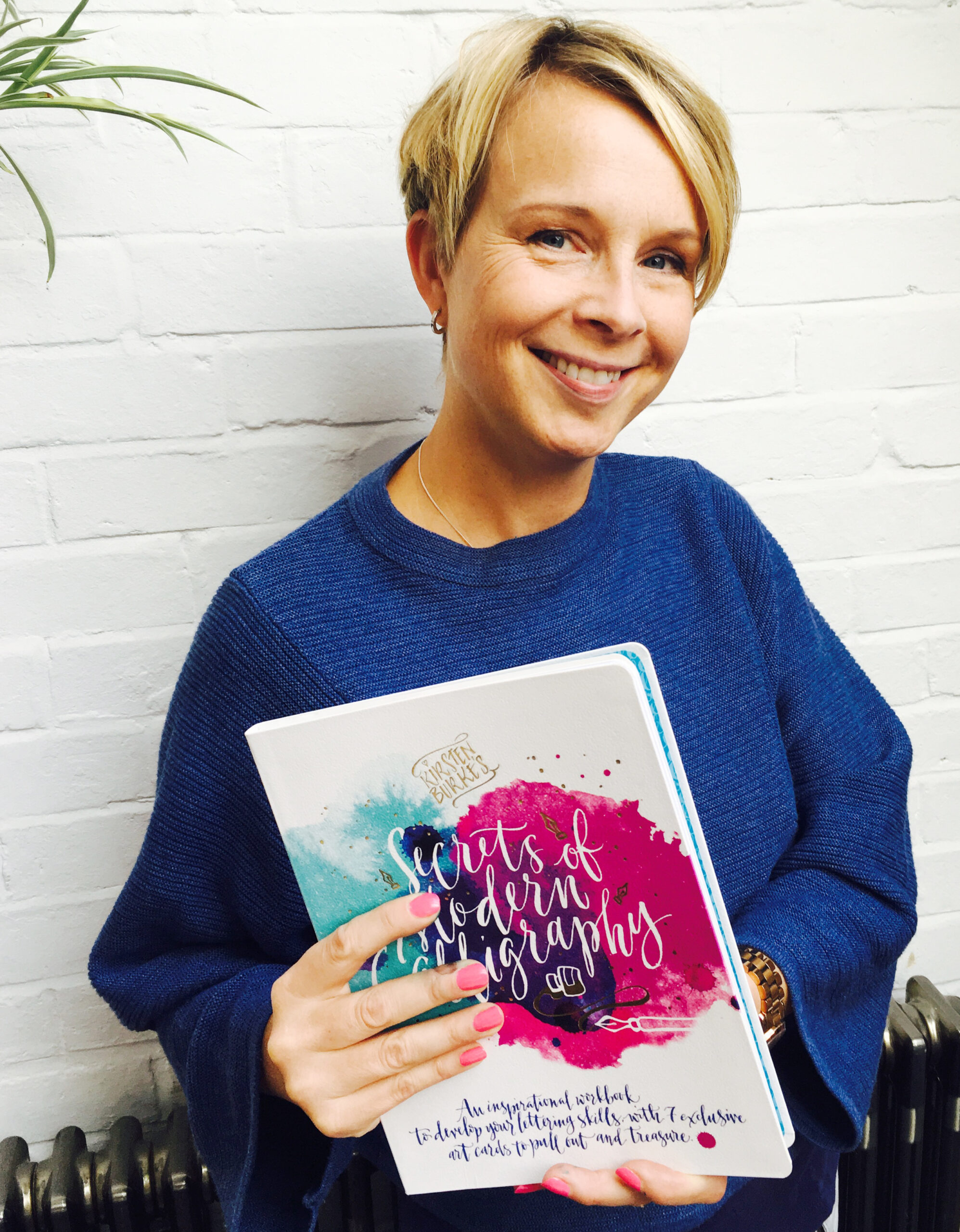Calligraphy writing has been practised for millennia, and now the ancient craft is enjoying a resurgence. Crafters of all ages are embracing a love of pen and ink. Hobbycraft has reported a surge in sales of letter writing sets, while there's been an explosion in brush lettering courses here in the UK.
Before the age of modern calligraphy and brush lettering, the standard way to write or transcribe anything was with pen and ink. Picture old monks is drafty cells transcribing illuminated manuscript after illuminated manuscript, creating calligraphy writing that is more like a work of art compared to most hand-written documents of today. But modern calligraphy is a lot less relentless and a lot more fun!
In modern calligraphy, a brush pen is often used for calligraphy writing, which is a far cleaner and easier option for modern calligraphy. But modern calligraphy can be enjoyed with a pen and ink, too, which has its own fun, mastering the methods of the past. The technique and practices remain the same in modern calligraphy, and the best way to practice and perfect your calligraphy writing is to first get to grips with a mixture of thick and thin strokes. Our modern calligraphy for beginners guide will help you get to grips with this great technique and develop your calligraphy writing skills.
We're including some free modern calligraphy drill sheets in this post, for you to download and print off to practice your calligraphy writing. You'll find modern calligraphy drills suitable for both brush pen as well as pen and ink methods, so you can choose the one for the calligraphy writing you prefer – or why nor master both styles of calligraphy writing? The download sheets have been provided courtesy of Modern Calligraphy & Lettering magazine, produced in collaboration with The Modern Calligraphy Co, and we are grateful to them for their assistance with compiling this Beginners guide to modern calligraphy, too.
We've split this beginners guide to modern calligraphy into different sections, so if there is a section you are most interested in, use these links to jumps straight there.
- What is modern calligraphy writing?
- How to do calligraphy
- Calligraphy materials for beginners
- Calligraphy set for beginners
What is modern calligraphy writing?
While traditional calligraphy is a formal craft with many rules aimed at achieving neat, consistent lettering, modern calligraphy is more playful, allowing you to break the rules and create your own artwork without years of training. Modern calligraphy includes dip pen and ink lettering with a pointed nib as well as brush lettering with a brush pen. Using guidelines, drills and practice you can easily get to grips with the principles of modern calligraphy and pick up the products you’ll need. There’s plenty of help out there too – books, magazines, YouTube videos and online courses will get you on your way. Read our in-depth guide to find out where to start.
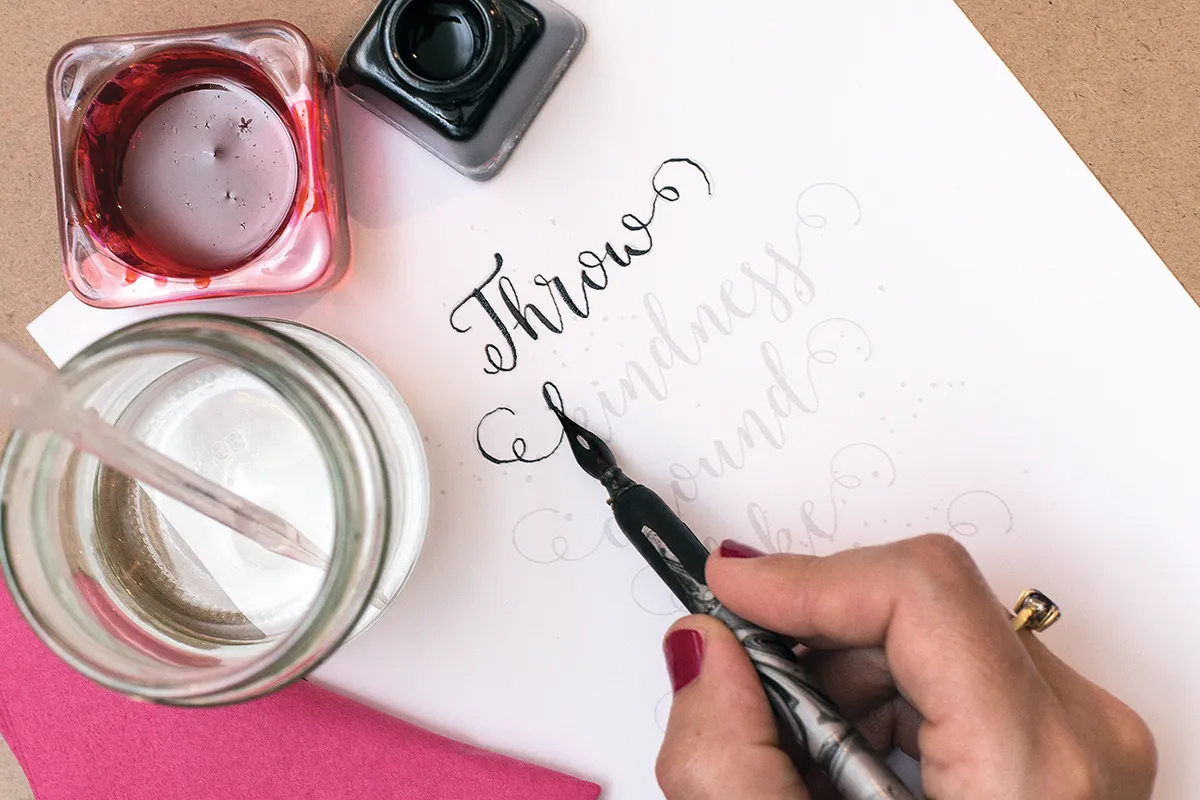
How to do calligraphy
A comfortable posture is important for when you start to write, shoulders relaxed and with your paper about 40-degrees to the side (anti-clockwise if you’re right-handed and clockwise if left). Your arm and nib should be pointing in the same direction for better control.
Step 1
Practise! Holding your pen at a deep angle (between 30 to 45-degrees), practice pressing down on your nib and writing downwards, making a row of downstrokes, then lighten your touch and write a row of thinner, upward strokes. These thick and thin strokes are the basis of any modern calligraphy, whatever your preferred tool. Repetitive ‘drills’ like these are great to start with before you form and connect letters or even add flicks and flourishes. You can find printable drill sheets and alphabet styles to practise with, here.
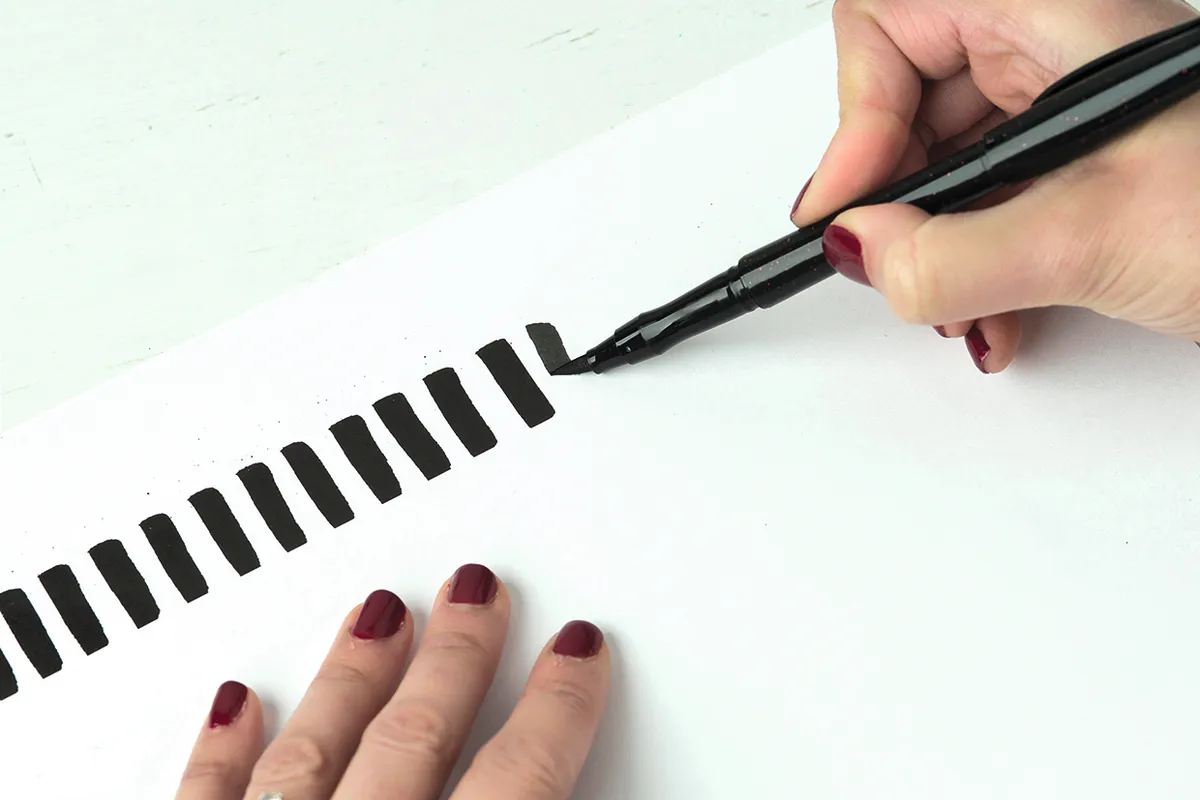
Step 2
Learn how to form letters with a brush pen: Use our modern calligraphy practice drill from Modern Calligraphy and Lettering magazine to learn the basics of calligraphy writing. Download the Modern calligraphy drill 1 to practice your thick and thin strokes with a brush pen.
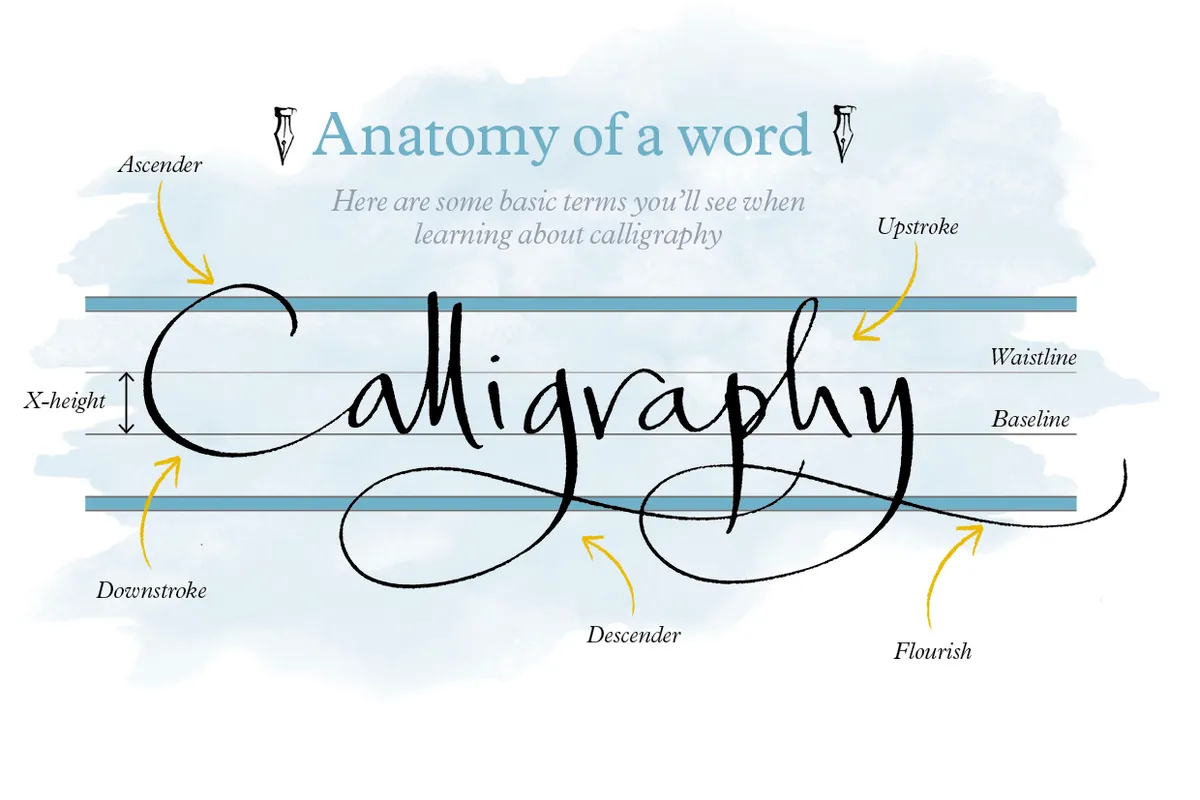
Step 3
Now let's try using a pen and ink: Download the modern calligraphy drill 2 to practice the basics of calligraphy writing using a pen and ink.
Calligraphy writing for Left handed writers
Those who write underhand will be able to follow the same rules as a right-hander, but turning the page clockwise to get the right position. Overhand writers will need to start at the base and push the pen up, applying pressure to create a thick stroke. Create thin lines with a lighter downward stroke.
Take a calligraphy for beginners workshop
Real-life courses are fantastic as you get insightful feedback on your posture and strokes. Choose from pre-recorded workshops and printable sheets or Zoom classes where they walk you through each step – many offer the option of a delivered kit with everything you need! Take a look at The Postmans Knock and The Modern Calligraphy Co to see what’s available.
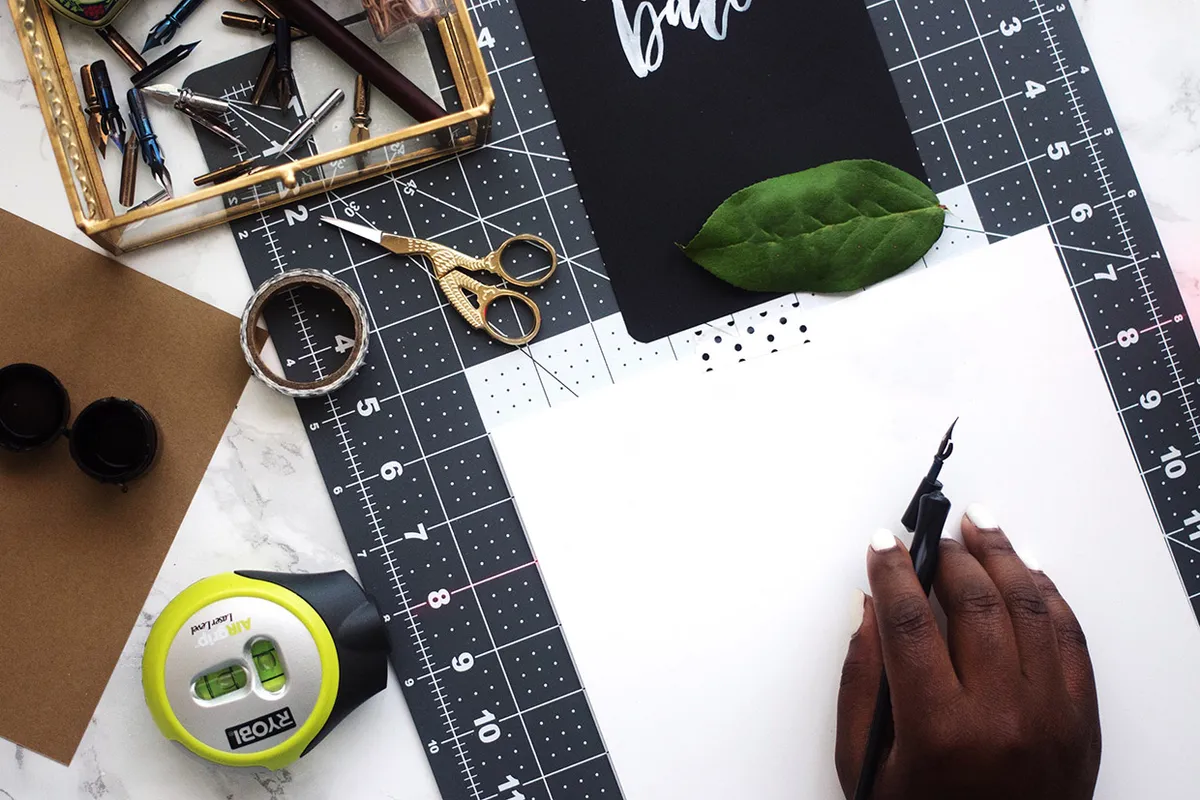
Image: jazmin-quaynor-unsplash
Calligraphy supplies for beginners
You don’t need many things for basic modern calligraphy, but if you’re going to go shopping, here’s what we suggest.
Nibs
If you want to try a dip pen for calligraphy writing, think about the nib you want. Modern calligraphy nibs are, on the whole, pointed with two tines – split metal pieces with a hole in between to hold the ink. When pressure is applied and the nib guided down the page, the tines open up, which makes the thicker strokes – the downstrokes. Pushing up the page needs a lighter touch, which produces thinner lines, aka the upstrokes.
Look for Leonardt and Brause nib brands as a start. A new nib will need to be burnished to remove any coating – you can do this by exposing it briefly to a flame or rubbing with a little toothpaste and tissue.
Pen holder
There are two main styles of modern calligraphy pens, many of which come with a ‘universal insert’ that enables the writer to switch nibs. A straight holder is ideal for beginners and is held like a usual pen. With an oblique holder, the nib sits in an angled head. This holder is recommended for more advanced calligraphers.
Inks
Start with a simple Indian or pigment ink, such as Winsor & Newton. Once you’re comfortable with your ink flow and dipping, try Japanese Sumi ink.
Ink flow is one of the trickiest things to get the hang of with dip pen calligraphy but there’s lots of help available, such as on the Kirsten Burke: The Modern Calligraphy Co. YouTube page.
Brush pens
Ready-made brush pens are similar to felt-tips but with a longer, more flexible brush, so the lines change between thick and thin, depending on the pressure or angle. They make consistent marks and are easy to control.
Fibre-tips: Feel more like a paintbrush, with bristles that spread when pressure is applied. There are many brands to choose from, including Ecoline and Manuscript.
Brush pens: Come with permanent or water-based ink. Which you choose will depend on what you’re planning to do with your lettering. Water-based pens are great for colour blending, as they can be mixed with other pens or dipped in water to dilute the colours and achieve gradient effects. However, if water is spilled, it will run. Permanent ink doesn't run, but won’t blend either. It’s great for writing on acetate, glass or porcelain
Water brush pens
Widely available at craft stores, these pens have a flexible brush tip with a liquid cartridge attached – simply fill the cartridge with ink for a continuous flow, or fill with water and dip into inks or paints for some creative colour blending.
Paintbrushes
Many letterers enjoy the natural feel of a simple brush. Sizes range from very thin to super-size and, as they’re easy to wash, paintbrushes can be used over and over with watercolours, metallic paints and all kinds of ink.
Inks & paints
With an ordinary paintbrush, you can use watercolours, gouache and all types of ink. For wall art, choose archival or lightfast inks, so your work doesn't fade. For shiny surfaces, such as mirrors or candle holders, choose acrylic paints as they dry opaque and permanent, and look great too.
Paper
This is the same for nib or brush work. Using fibrous or even printer paper can damage the tips of brush pens over time, so choose smooth paper (eg. Rhodia practice pads) or good-quality watercolour paper from an art store.
Calligraphy paper for beginners
Rhodia calligraphy paper pad
Here's a clever idea to get your modern calligraphy up to scratch! This A4 Rhodia paper pad comes with a subtle pre dotted grid in place, which you can use as a guideline as you practice your calligraphy writing. This option even comes with a free alphabet to use.
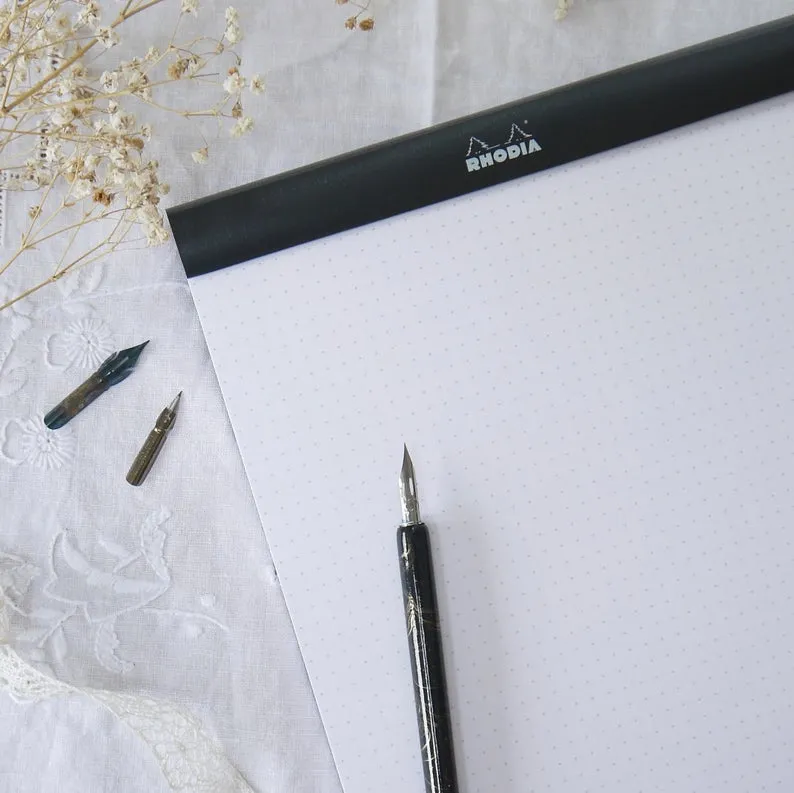
Calligraphy practice paper
This ultra smooth practice paper will stop your nib from snagging and extend the life of your pen and ink calligraphy pens. It is also just really lovely to write on! Choose from A4 or A5 options.
• Buy it now (HotFreshBright – Etsy)
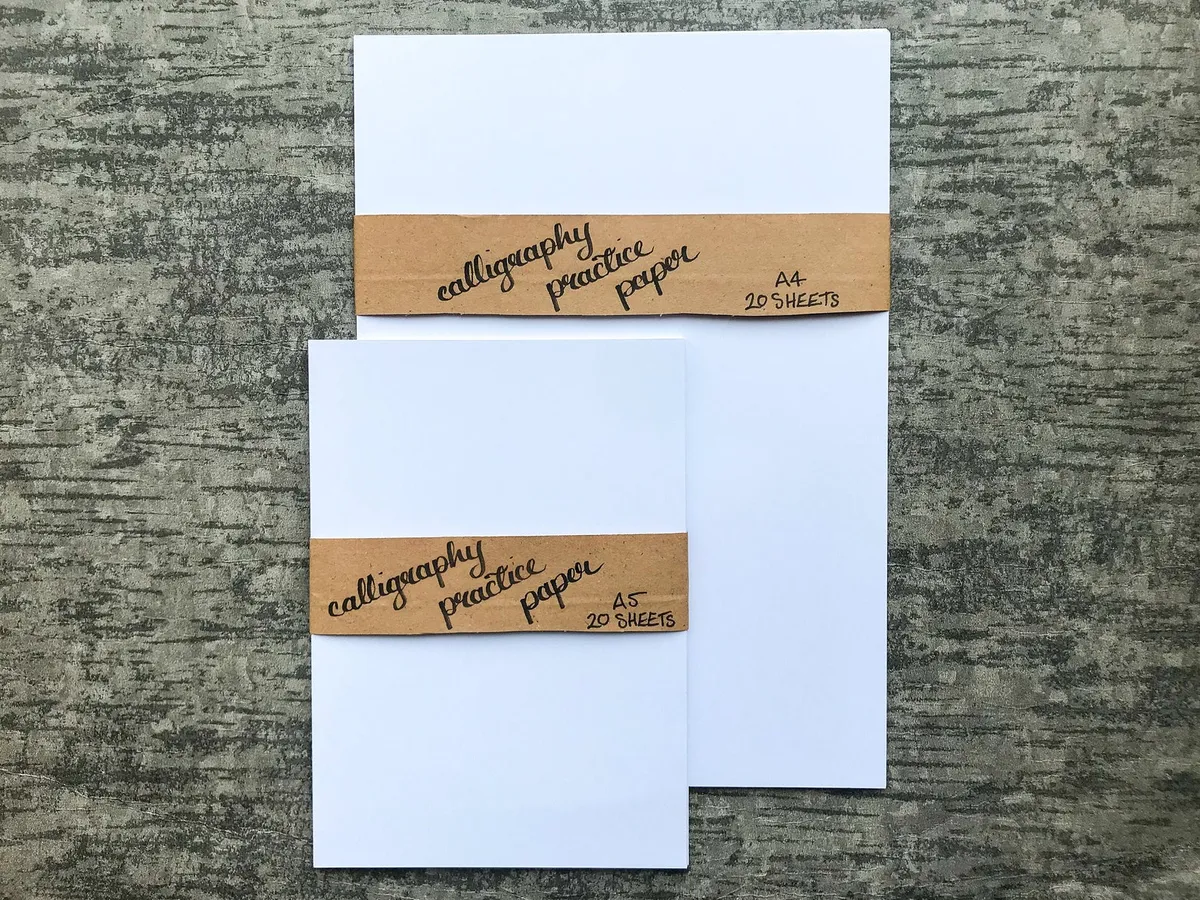
Calligraphy pens for beginners
Straight holder calligraphy pen
This calligraphy pen comes with three nibs and a universal h0lder that lets you add other nibs, as well as a pot of black ink.
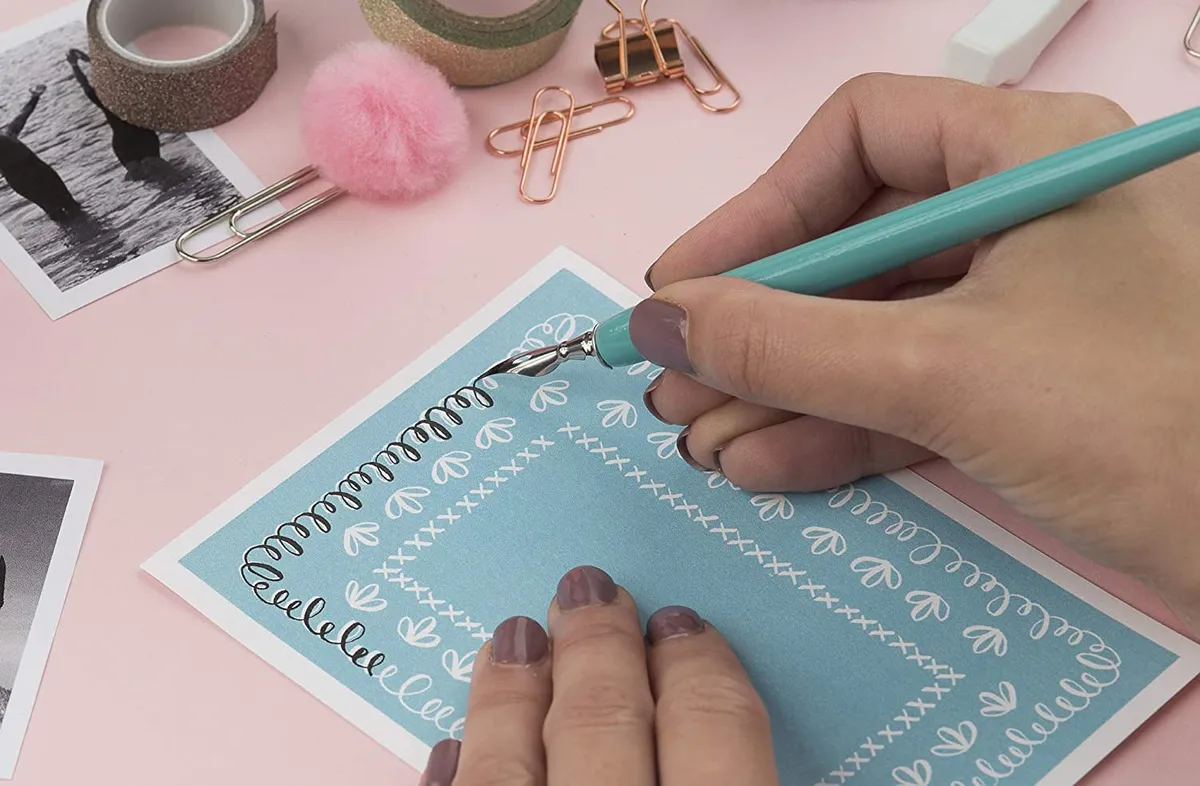
Moblique 2-in-1 calligraphy pen
• Buy now (JLCalligraphy – Etsy)
Just like a magpie, crafters new often drawn to bright, shiny things. And not only can this 2-in-1 Moblique calligraphy pen be used to have the nib in both straight and oblique positions, it also comes in 10 brilliant colours. We love the metallic version best of all, but they are all very pretty.
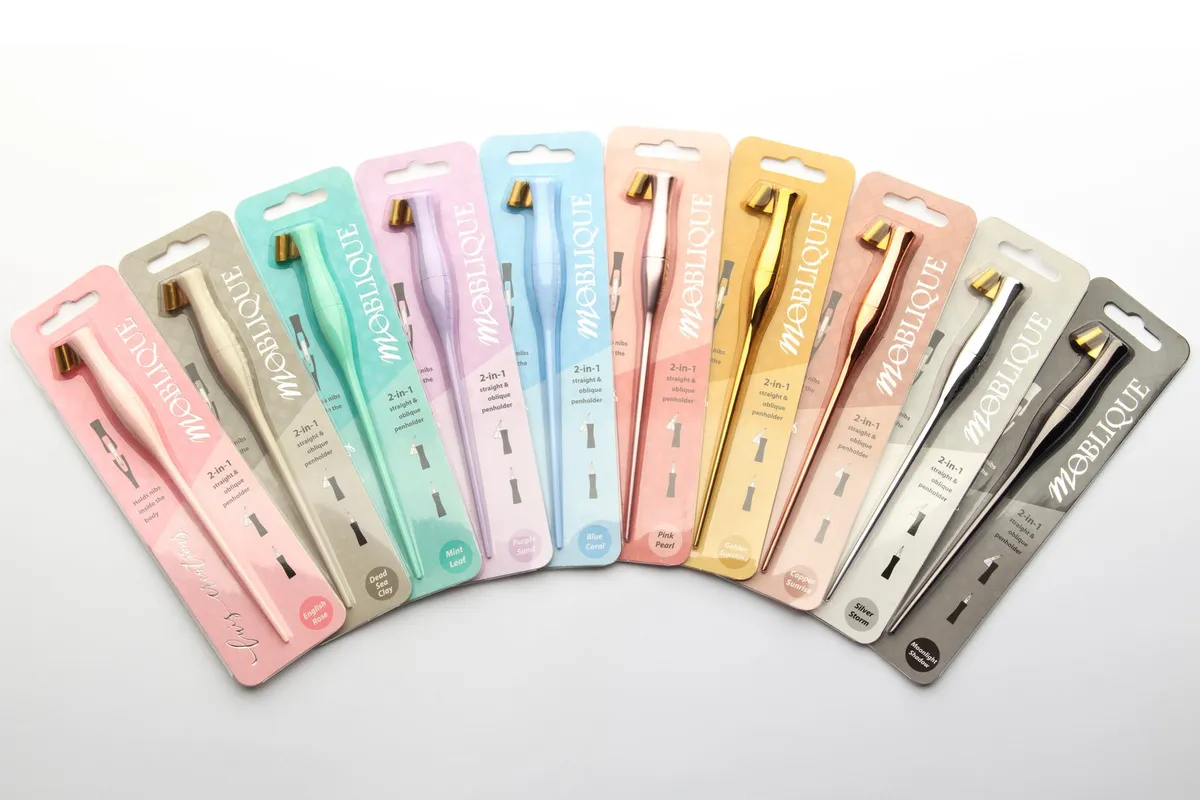
Sakura black brush pen
(If you are leaning towards a brush pen for your modern calligraphy, this black brush pen from Japanese company Sakura has a node fine brush point and is a good choice for brush calligraphy for beginners.
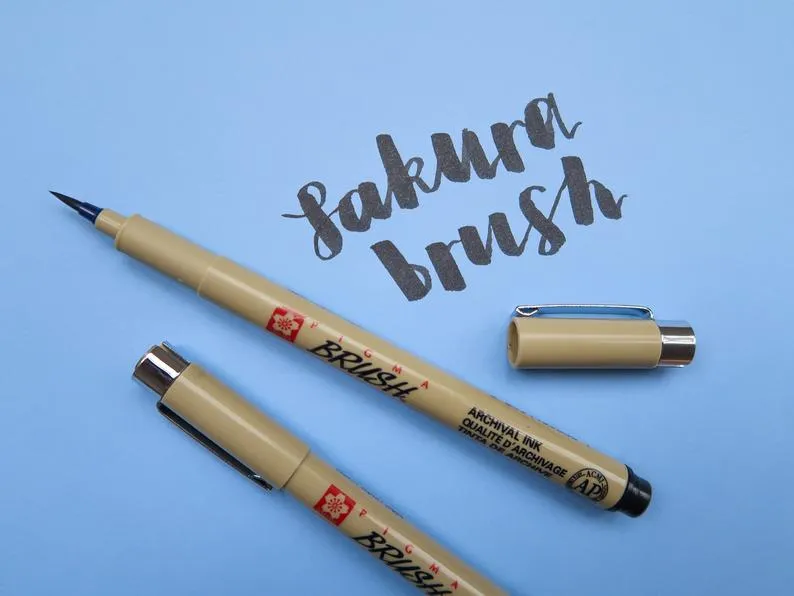
Calligraphy nibs for beginners
Brause Calligraphy nib sampler
- Buy now (Olievpens, Etsy)
Fancy a set of nubs for you calligraphy writing? These beautiful Brause Company nibs come in a set of six to help you achieve modern calligraphy is lots of different thicknesses and finishes.
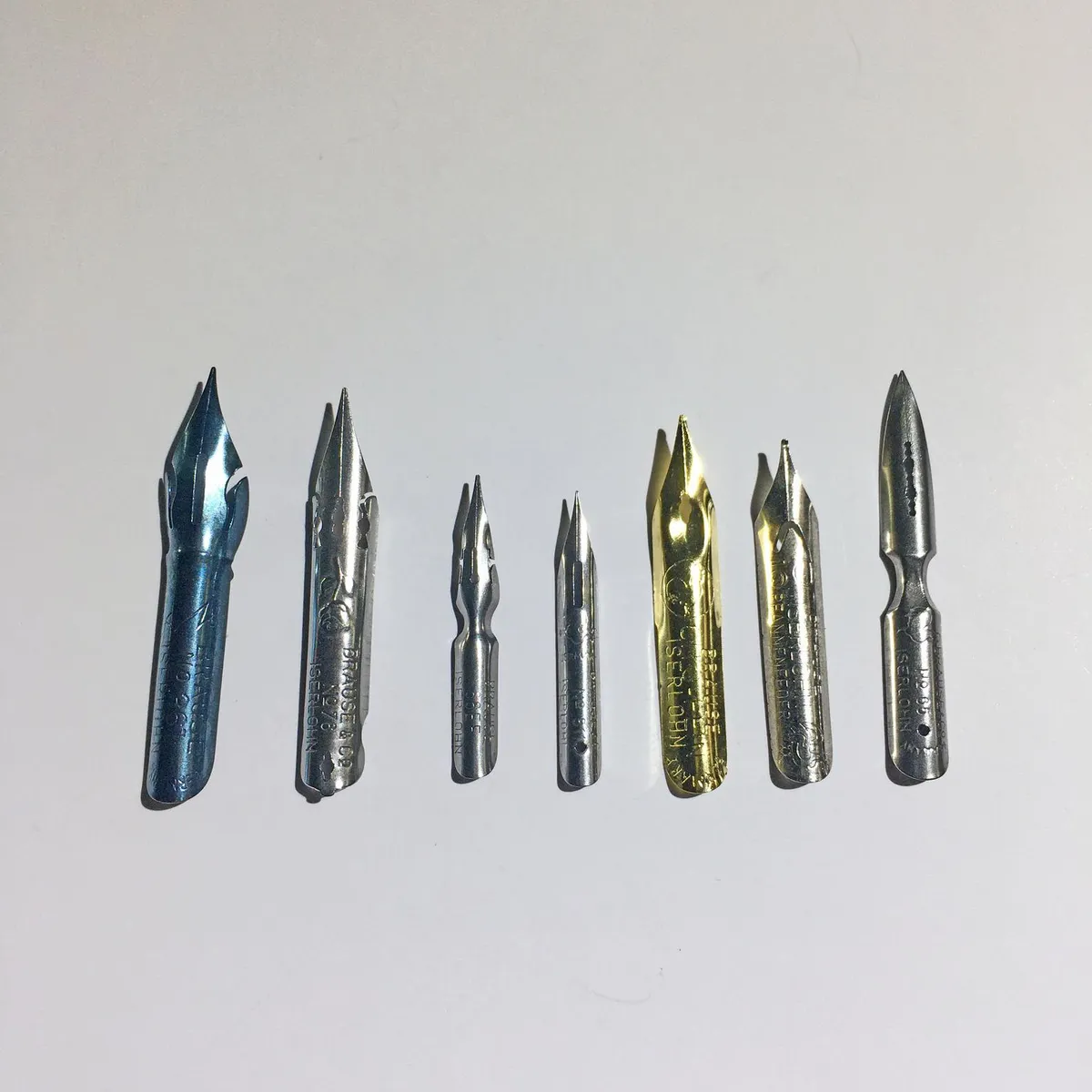
Brause general handwriting nib
- Buy now (UndertheRowanTrees2, Etsy)
If you are looking for a single nib to use in your everyday modern calligraphy, or want to test our pen and ink to see if it for ou before investor in a full set, this Brause Company nib is a good standalone choice.
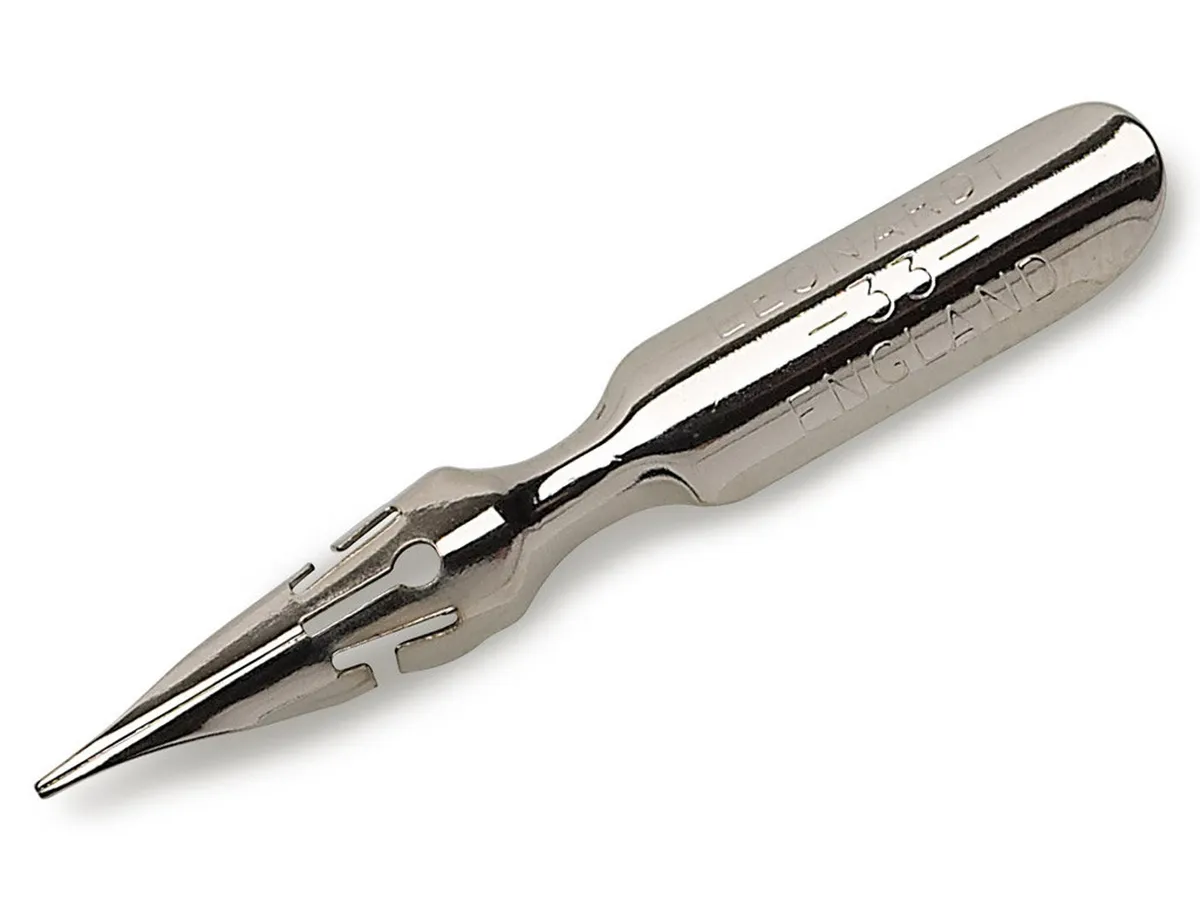
11 nib copperplate sampler
- Buy now (Caracol Creative, Etsy)
Ooooh, we do love this selection of 11 pointed nibs, to use in copperplate-style calligraphy. But it may not be the best choice for beginners – unless you know you want to go all-in on the copper plate style, which is just stunning. There are pointed nibs in the set from hiro, Brause, Gillot and others to really help you make the most of the copperplate style.
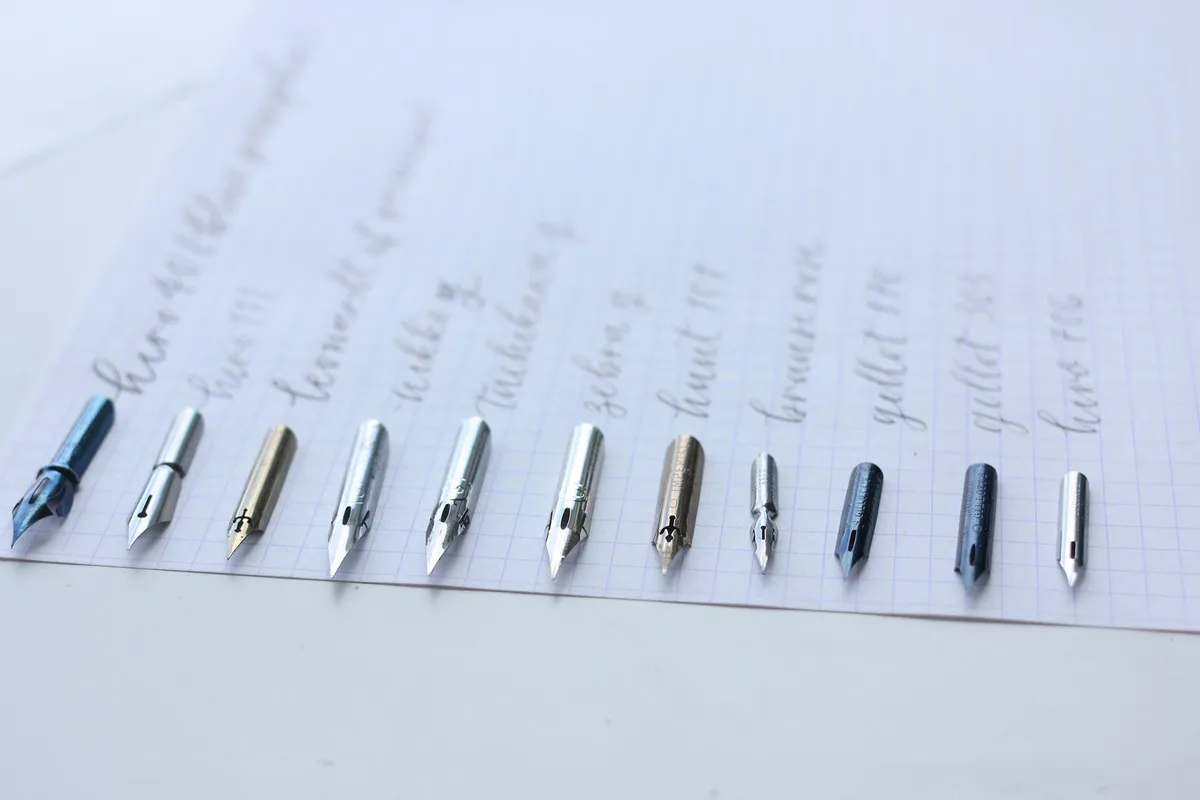
Calligraphy sets for beginners
For those who prefer to buy a complete set, or for calligraphy-themed gift, choose a calligraphy set.
Kirsten Burke modern calligraphy set for beginners
- Buy now (Kirsten Burke, Etsy)
What a lovely, colourful gift set for modern calligraphy this is! The set includes two different nibs, pen holder, penners and two colourful pigment inks, as well as cards, post cards, place setting, tags and Rhodia dot pad, plus practice sheets and easy-to-follow teaching guides complete with online resources. It's a great resource for anyone getting started in modern calligraphy.
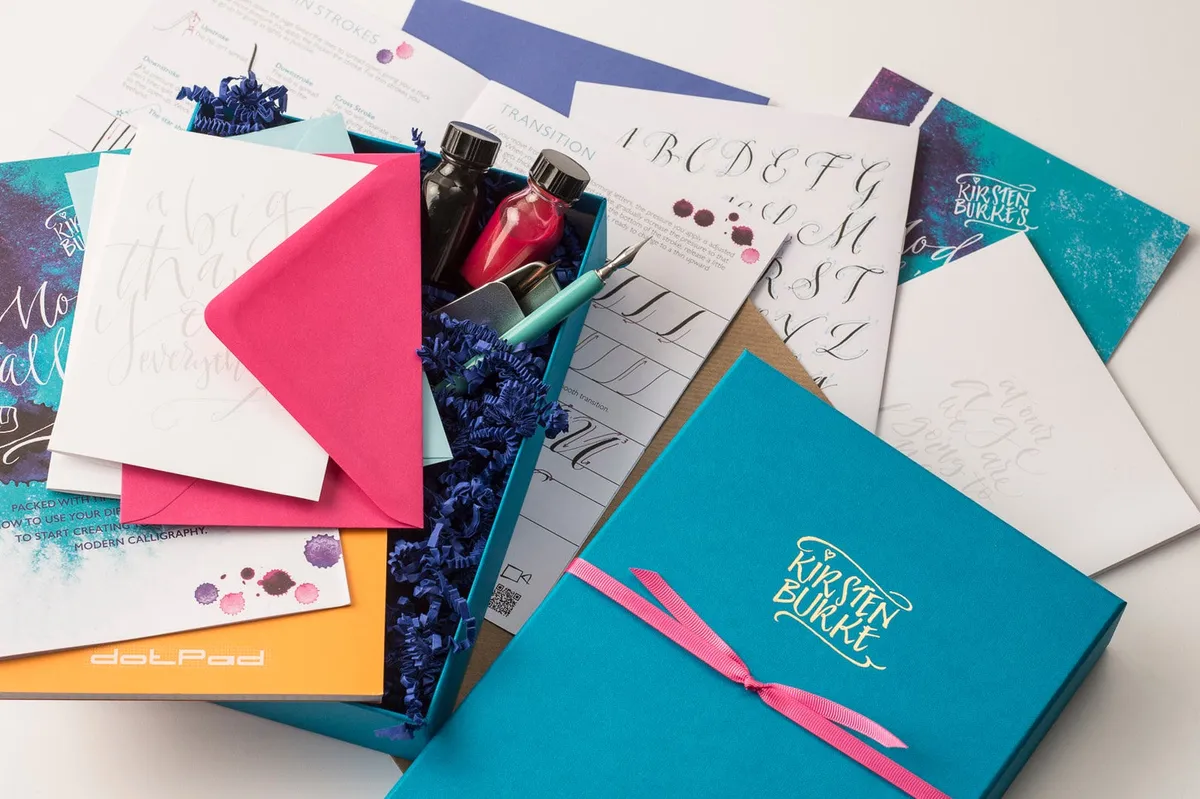
Brush calligraphy beginner set
- Buy now (HotFreshBright Etsy store)
Here's a good modern calligraphy set to choose if you'd rather explore calligraphy writing with brush pens as opposed to pen and ink. The set comes with a blanket k brush pen, practice sheets, cads, envelopes and tags – and you can choose to add 8 metallic brush pens too, if you'd like to.
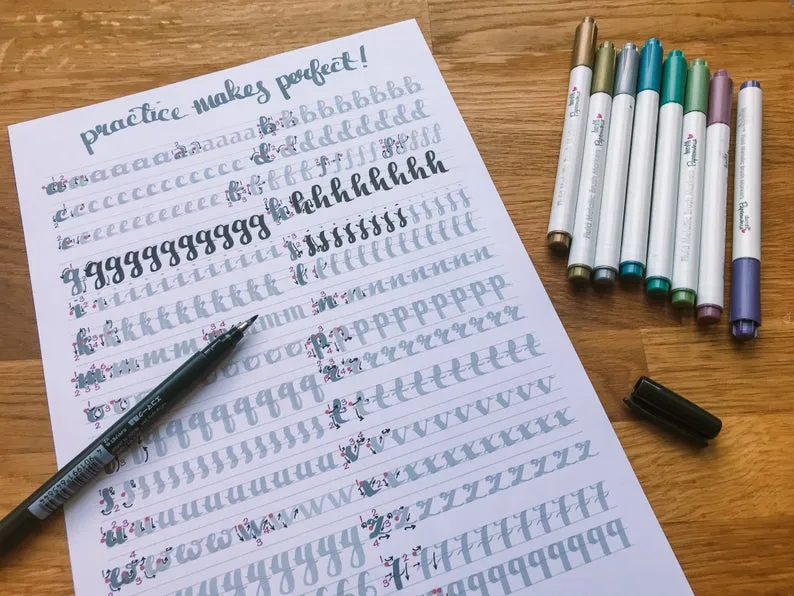
Modern calligraphy starter set
This modern calligraphy started set with everything you need to learn the ropes – including an oblique pen for hand lettering with a nib, ink and instructions.
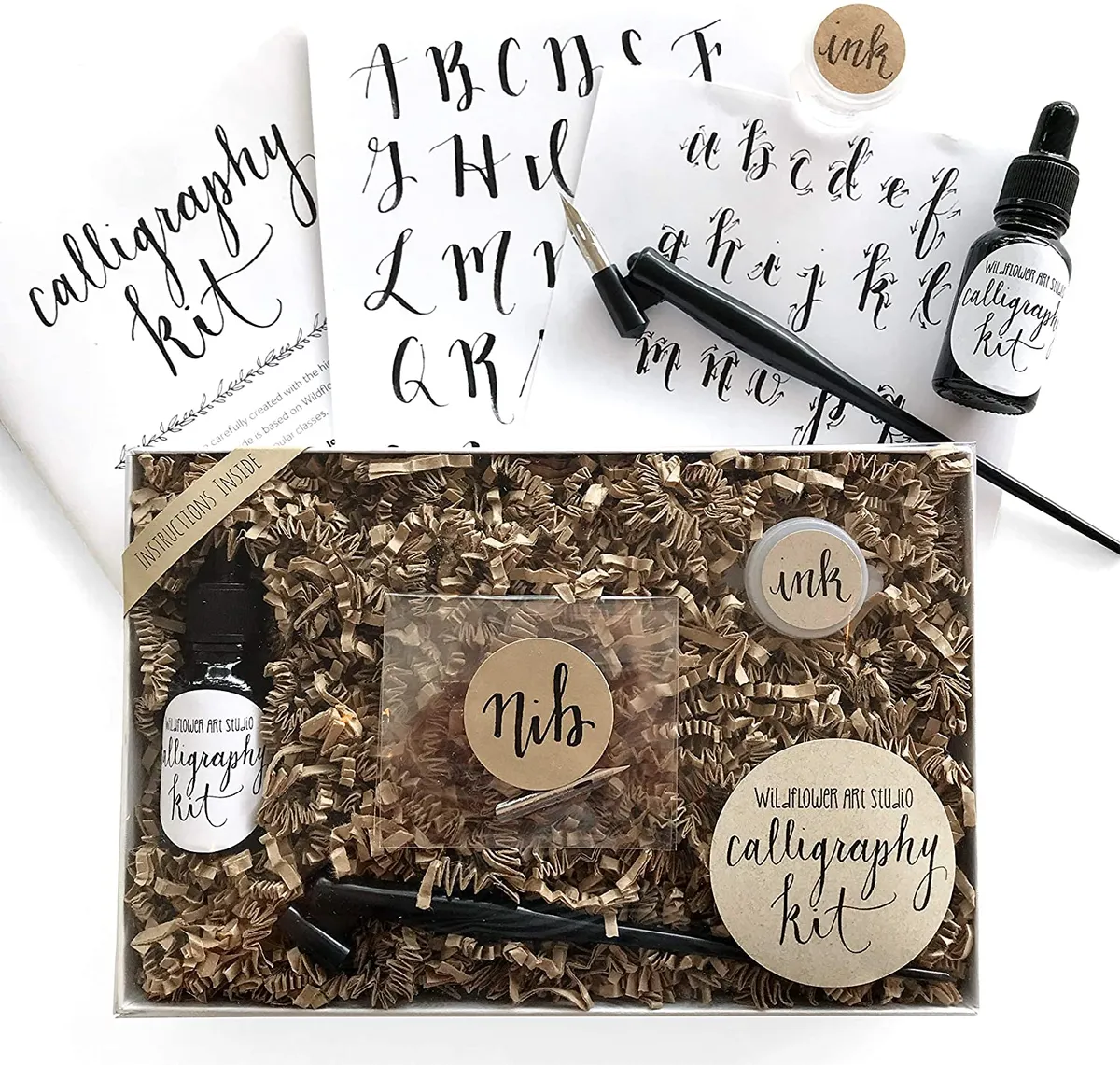
Find more modern calligraphy projects on Gathered
You'll find more projects and tutorials for try out calligraphy writing right her on Gathered. Take a look at our Christmas calligraphy upcycle crate project and our tutorial showing how to add calligraphy quotes to photographs with brush lettering. You'll also find more practice sheets and projects ideas in our Modern Calligraphy and lettering: templates and printables article.
